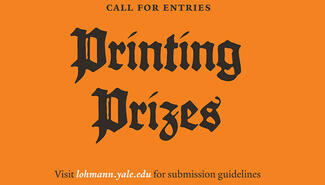Sixteenth-century mapmaker helps Yale Library celebrate the holiday season
As this year’s holiday card illustration, Barbara Rockenbach, Stephen F. Gates ’68 University Librarian, has chosen a detail from a colorful portolan chart now on display at the Beinecke Library. Only a portion of the large parchment is shown here.
As early as the thirteenth century, sailors traveling the Mediterranean Sea for trade relied on portolan maps as wayfinding tools. The word “portolan,” with roots in Italian and French, means “related to ports or harbors.” Despite being charted through exploration on land and sea, these maps offered a surprisingly accurate bird’s-eye view of a region.
Mapmakers often added topographical features and drawings of the exotic creatures (some imaginary) that Europeans associated with Africa and the Middle East, the regions shown at left in this detail. Red notations along the coastline indicate major ports; black notations indicate minor ones.
This chart, made by Joan Riezo Olives in 1590, was likely decorative rather than functional—perhaps made for a merchant’s wall, as was common. It has elements similar to those found on earlier portolan maps made for navigation. The Compass Rose, at bottom edge, is a tool commonly found on nautical charts—its sixteen points represent north, south, east, west, and directions in between. The inset “globe,” a feature in later portolans like this one, depicts the larger territory, including the coastline of the New World.
The exhibition World in Maps, 1400–1600, co-curated by Raymond Clemens and Kristen Herdman, presents some of Yale Library’s most impressive and important maps of the European world, along with Middle Eastern and Asian maps and the notorious forgery the Vinland Map. The exhibition will be on view through Jan. 8.
—Deborah Cannarella
Image: Joan Riezo Olives, Portolan chart of the Mediterranean Sea and Europe (detail). Manuscript map on parchment. Messina, 1590. Manuscript 49cea 1590.



